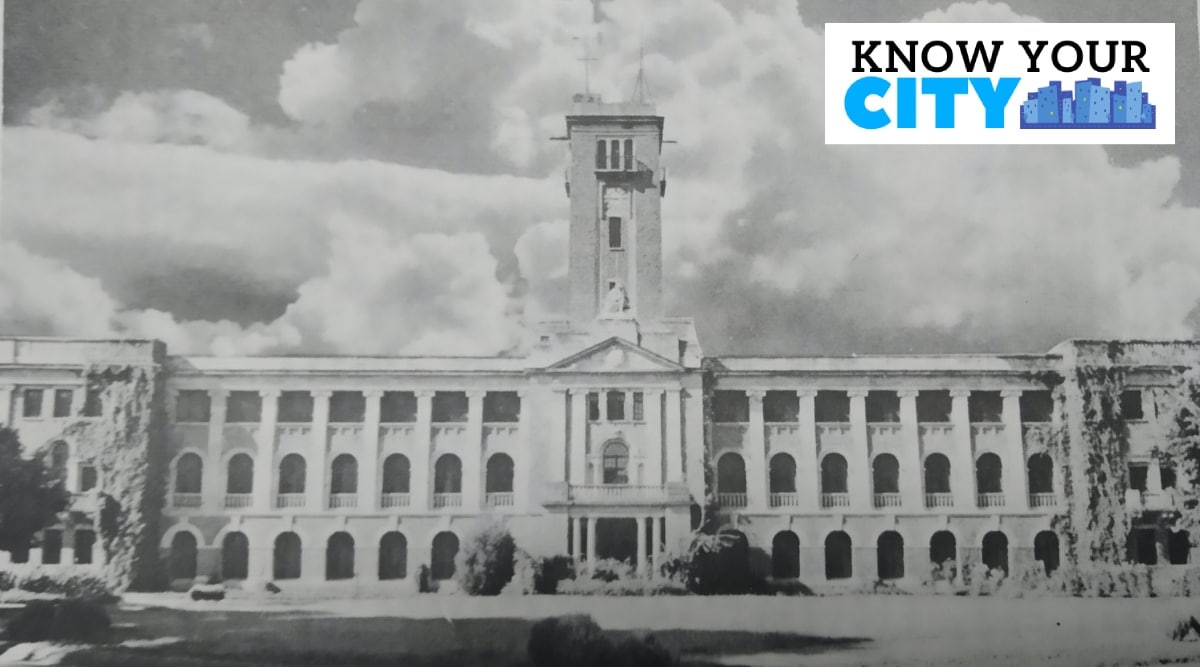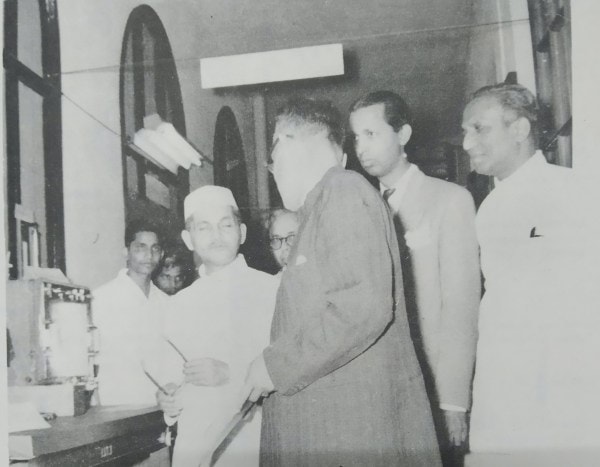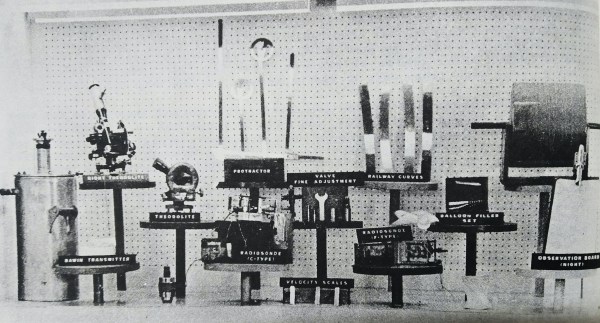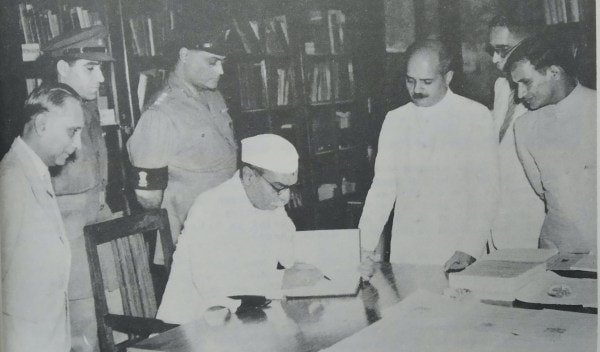 The meteorological office in Pune was built in 1928.
The meteorological office in Pune was built in 1928. Had the Second World War not broken out in 1939, Pune would probably have continued to be the headquarters of the India Meteorological Department (IMD) for a longer period. In fact, it was only about a decade before the war – on April 1, 1928 – that Pune became the IMD’s headquarters.
As many as 74 meteorological observatories had been operational in British India, including some of the world’s oldest ones located in the then cities of Bombay, Calcutta and Madras.
As meteorology developed in the country, the secretary of the state of India, after consulting several meteorologists in England, decided to appoint an Imperial Reporter tasked with supervising meteorological activities across India.
English meteorologist H F Blanford was offered the post of Imperial Reporter to the Government of India in August 1874 while he was on leave back home. Upon his return to India on January 15, 1875, he assumed the charge and extensively toured different provinces as well as the state of Hyderabad. His detailed scheme report, submitted in July 1875, mentioned the organisation of the meteorological system.
The government approved this scheme through the department of revenue, agriculture and commerce on September 27, 1875, thus formally establishing the India Meteorological Department or IMD.
Calcutta was the IMD’s first headquarters and Blanford, the only gazetted officer in the department then, opened a temporary branch office at the Government Telegraph Office in Shimla in 1875.
 Former Minister of Transport and Communications Lal Bahadur Shastri inaugurating the siver jubilee celebrations of the Division of Agricultural Meteorology.
Former Minister of Transport and Communications Lal Bahadur Shastri inaugurating the siver jubilee celebrations of the Division of Agricultural Meteorology. However, after the office was moved to the Kennedy building in Shimla, it was deemed an ill fit for the IMD’s expansion and newer initiatives. As a result, the IMD considered moving the headquarters out of Shimla to somewhere in the plains, so that the scientists could perform monsoon research with better facilities.
Seniors at the IMD first proposed Poona (now Pune) as the new headquarters in 1924. Subsequently, the government sanction came in 1926. A sum of Rs 2 lakh was allotted in the 1926-1927 budget for the procurement of land and erection of office buildings.
The IMD purchased about 10 acres of land on Ganeshkhind Road from the Bombay government and approved the building design prepared by M/s Steven and Partners. Civil construction of the same started in 1926. The construction of the now-iconic building, which is a heritage structure today, was carried out at a cost of Rs 9.5 lakh. Due to delays in completion of the construction, however, the building could not be fully occupied before the end of 1928.
The first batch of officers was transferred from Shimla in March 1928. The first All India Weather Report was published from Poona on April 1, 1928. Sir Leslie Orme Wilson, the Governor of Bombay, inaugurated the Pune office on July 20, 1928. By the end of the year, the headquarters became operational at full capacity.
The IMD Poona headquarters was responsible for the general administration and works were divided into seven sections – weather, observatories, marine, instruments, upper air, library and enquiry, and general section. Except for the library, each section was headed by a meteorologist who reported to the director general.
The weather section was mandated to prepare a daily telegraphic summary of the general weather situation of the country along with a 24-hour forecast, publishing daily, monthly and weekly reports, and issuing storm warnings for the west coast, Arabian Sea and inland.
The Poona IMD housed the first agriculture meteorology branch which got operational under meteorologist L A Ramdas in 1931. The branch was funded by the Imperial Council of Agricultural Research in 1928 and later became a permanent division on April 1, 1940.
 Upper instruments at the IMD office in Pune.
Upper instruments at the IMD office in Pune. Since 1875, the Alipore Observatory in Calcutta had been responsible for the calibration and repair of meteorological instruments, repairs and supplies to all observatories, but in 1928 the Poona office set up an instruments section. In 1932, all the instrumentation responsibilities with the Alipore observatory were given to Poona. J M Sil led the effort in listing the instrument specifications.
In 1947, the IMD had two instrument workshops established, each for surface instruments and upper air instruments operational at Poona and Delhi, respectively. Over 80 types of instruments are manufactured in these workshops.
Till date, about 5,000 British-era meteorological instruments have been carefully preserved at the surface instruments division at the IMD Pune office.
All major milestones in its history since 1875 find mention in a temporary museum. Pre-digital era instruments used for recording rainfall, temperatures, humidity, evaporation rates, air pressure, and wind speed and direction can be found here.
Two of the oldest instruments in this antique collection are a sextant (1730) and an arithmometer (1851). Many instruments were received as gifts from the Queen of England while some were manufactured in London, Portugal and the USA. One of the instruments has a label that reads: “This piece was one of the last to be manufactured”.
All operations of the IMD Poona headquarters remained smooth till 1939. The annual expenditure of the IMD was Rs 6 lakh in 1927, which rose to Rs 21 lakh by 1939, mainly due to services provided to facilitate aviation during the war.
 Former President Dr Rajendra Prasad visited the Meteorological Office in Pune.
Former President Dr Rajendra Prasad visited the Meteorological Office in Pune. The commencement of World War II in September 1939 boosted meteorological operations, particularly those required for aviation services. Several pilot balloon stations, current weather and surface observatories and forecasting offices were opened. The government reopened its forecasting office in Delhi at the then Wellington airport (later known as Safdarjung airport). The war, however, necessitated the closer presence of weather experts for aviation in Delhi.
“When the WWII started, the Government of India felt that the Director General should be in close touch with the Air Force Headquarters and other departments requiring meteorological service, so that the demands of the war efforts could be met to the maximum possible extent. Consequently, the administrative office of the Director General was transferred to New Delhi for the war period but has continued since,” says ‘100 years of Weather Service – 1875-1975’, a book published by the IMD.
In 1939, about 30 acres of land was acquired on Lodhi Road and that is where the IMD’s headquarters has been operating out of till this day.
India’s Independence in August 1947 affected neither IMD’s Poona nor Delhi offices. Independent India’s IMD had a weather centre in Poona, five forecast centres, 12 auxiliary centres, 40 aerodrome reporting centres, 12 radiosonde stations, 50 pilot balloon observatories, 222 surface observatories and four seismological stations. At the time of Independence, about 20 to 25 per cent of the total stock of instruments was sent to Pakistan.
With the IMD Pune office building having earned the tag of heritage building and having been renamed as the Office of the Climate Research and Services of the IMD, the Pune office shall continue to operate as the data repository. The National Data Centre located on the premises of the IMD in Pune is the ultimate place where all the meteorological data generated daily are verified, charted and archived for weather references and future climate studies.
- The Indian Express website has been rated GREEN for its credibility and trustworthiness by Newsguard, a global service that rates news sources for their journalistic standards.

